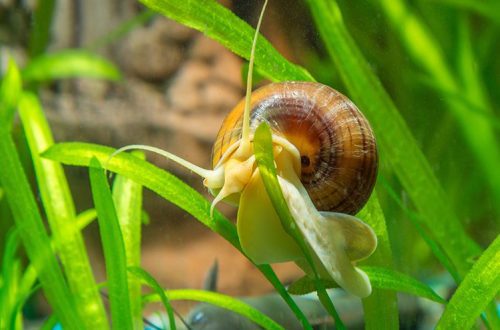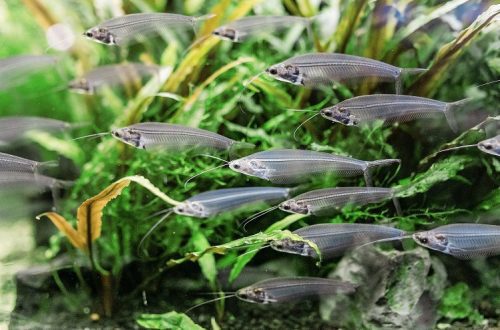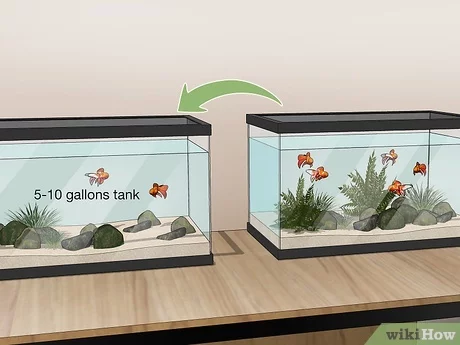
Breeding fish at home
One of the most difficult but rewarding aspects of aquarism is the breeding of fish at home. Often, the first attempts end in failure, in order for everything to go smoothly, it will be necessary to accumulate experience and knowledge about the features of reproduction of certain species. Aquarium fish can be divided into two broad groups according to the method of reproduction – spawning and viviparous species (viviparous).
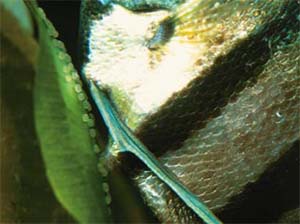 Spawning species use the practice of external fertilization, when the female lays hundreds or thousands of eggs, and the male releases his seed at the same time. This is a rather unsystematic method and it is not surprising that many eggs remain unfertilized. The chances are slightly increased when the couple at this moment is pressed against each other, as if hugging their fins. The incubation period is short, lasting about 36 hours, but at this time the eggs are at maximum risk of being eaten, so some species have developed defense mechanisms. Some lay eggs in hard-to-reach places (caves, empty shells, the underside of plant leaves, etc.), others remain to protect the masonry from strangers, others carry eggs with them in their mouths and even in case of danger hide their babies in it.
Spawning species use the practice of external fertilization, when the female lays hundreds or thousands of eggs, and the male releases his seed at the same time. This is a rather unsystematic method and it is not surprising that many eggs remain unfertilized. The chances are slightly increased when the couple at this moment is pressed against each other, as if hugging their fins. The incubation period is short, lasting about 36 hours, but at this time the eggs are at maximum risk of being eaten, so some species have developed defense mechanisms. Some lay eggs in hard-to-reach places (caves, empty shells, the underside of plant leaves, etc.), others remain to protect the masonry from strangers, others carry eggs with them in their mouths and even in case of danger hide their babies in it.
 In viviparous species, fertilization of eggs occurs inside the body of the female, and the fry appear already fully formed. The male injects the seed with a tube-shaped anal fin called a gonopodia. When mating, the seed enters the female in batches in original packages that dissolve inside within 15 minutes. The sperm remaining after the fertilization of eggs does not die like in mammals, but is preserved and remains viable throughout her life as a female. Thus, the female is able to store the seed from several males at once and use it in the future to reproduce a new generation. Such a breeding strategy provides better fry survival in comparison with spawning species, since the most dangerous incubation period of eggs is in relative safety. However, it is worth noting that almost all viviparous species lack parental instinct, and juveniles can become victims of their own parents.
In viviparous species, fertilization of eggs occurs inside the body of the female, and the fry appear already fully formed. The male injects the seed with a tube-shaped anal fin called a gonopodia. When mating, the seed enters the female in batches in original packages that dissolve inside within 15 minutes. The sperm remaining after the fertilization of eggs does not die like in mammals, but is preserved and remains viable throughout her life as a female. Thus, the female is able to store the seed from several males at once and use it in the future to reproduce a new generation. Such a breeding strategy provides better fry survival in comparison with spawning species, since the most dangerous incubation period of eggs is in relative safety. However, it is worth noting that almost all viviparous species lack parental instinct, and juveniles can become victims of their own parents.
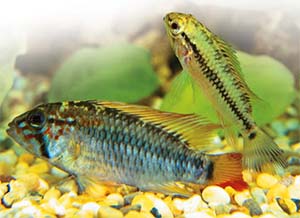 Offspring can be obtained in the only possible way – a sexually mature male and female should be together in the aquarium. It is not difficult to detect a male and a female in species with pronounced sexual dimorphism, males are large and brightly colored, these include Killy fish, cichlids, etc. In other species (some characins, cyprinids), visually determine the male and female much more difficult, differences can only appear during the mating season, and even then not for everyone. Therefore, in order to guarantee spawning, at least five individuals are usually acquired – among them there will certainly be at least one female or male.
Offspring can be obtained in the only possible way – a sexually mature male and female should be together in the aquarium. It is not difficult to detect a male and a female in species with pronounced sexual dimorphism, males are large and brightly colored, these include Killy fish, cichlids, etc. In other species (some characins, cyprinids), visually determine the male and female much more difficult, differences can only appear during the mating season, and even then not for everyone. Therefore, in order to guarantee spawning, at least five individuals are usually acquired – among them there will certainly be at least one female or male.
For the vast majority of species, it is enough to keep a mature male and female together to ensure future offspring. However, for some species, choosing a partner is a very important and lengthy process. They will not form a pair with the first member of the opposite sex that comes across for reasons known only to them. These fish include, for example, Discus, which, having once formed a pair, remain faithful throughout their lives. In the case of these species, the aquarist is advised to purchase an already formed pair or a young group of six or more individuals that will mature together and will certainly form at least one suitable pair. Such a tender relationship between Discus has its opposite in the face of African cichlids that live in the great African lakes – Tanganyika and Malawi (another name for Nyasa). Cichlids, like most other species, are not particularly picky in choosing a partner, but unlike them, during the spawning period, males begin to tirelessly pursue females, rather rudely encouraging them to mate. If she is not ready and does not have the opportunity to hide, the consequences can be sad – the female may die. At home, it is necessary to resettle the female in a separate tank to give her time to recover and become ready to lay eggs.
Contents
Stimulation of spawning and breeding of spawning species
There are two main ways to stimulate spawning. The first includes a daily supply of food rich in protein foods (bloodworm, daphnia, brine shrimp, etc.) necessary for the healthy development of caviar and milt. The second is related to changes in water conditions.
For example, Amazonian species often breed during the rainy season, when the water levels in their habitat rise and flood waters become rich in various invertebrates and crustaceans. Therefore, in an aquarium, a one-time replacement of part of the water with fresh water, a decrease in temperature by several degrees, and the supply of live food can serve as an incentive for spawning. For Killy fish, on the contrary, the stimulus is a decrease in the water level and an increase in temperature, since in nature they spawn when the sun begins to dry up their reservoirs.
After recreating the necessary conditions, it remains to wait. You can determine the beginning of the mating season by external signs – the color and behavior of the fish. Males, as a rule, acquire a more saturated color, in some cases they begin to show aggression towards potential competitors and other types of similar colors. In some species, one can notice peculiar mating rituals, when the male prepares and carefully cleans the future spawning ground, where he later invites the female, already noticeably swollen from caviar.
Spawning fish species have several behavioral patterns: some spawn in pairs, others form small tribal groups – a kind of harems, where there are two or more females per male, while others spawn in flocks of more than 6 individuals, etc. Depending From the model of fish behavior during spawning, you should select the appropriate design of the spawning aquarium.
Model “Scattering eggs”
 The fish live and spawn in small flocks. Males and females are visually almost indistinguishable. During spawning, females scatter a large number of eggs at random, which fall on leaves, soil and other decorative elements. The fish do not show parental instincts and may eat their own eggs. These include some cyprinids, characins and others.
The fish live and spawn in small flocks. Males and females are visually almost indistinguishable. During spawning, females scatter a large number of eggs at random, which fall on leaves, soil and other decorative elements. The fish do not show parental instincts and may eat their own eggs. These include some cyprinids, characins and others.
The spawning aquarium is designed as follows – the soil is made of glass beads with a diameter of about 1 cm, a fine mesh can be placed at the bottom. This design protects the eggs from being eaten. Eggs fall under the net and fall between the balls, becoming inaccessible to adult fish.
Model “Masonry Formation”
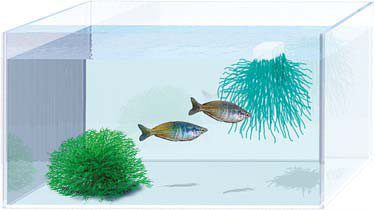 The fish form stable pairs and show parental care. Spawning lasts for several days, eggs are attached to plants or in secluded places in the form of snags, caves, grottoes. The fish stay close by, guarding the laying, and when the fry appear, the parents jealously protect them from any threats. These include: discus, angelfish and others.
The fish form stable pairs and show parental care. Spawning lasts for several days, eggs are attached to plants or in secluded places in the form of snags, caves, grottoes. The fish stay close by, guarding the laying, and when the fry appear, the parents jealously protect them from any threats. These include: discus, angelfish and others.
The design uses thickets of broad-leaved floating or rooting plants. If the fish live in a species aquarium, there is no need for a spawning tank.
Model “Masonry formation in caves/gorges”
 Fish demonstrate parental care, but extremely complex relationships between parents. After spawning, the female takes the eggs into her mouth for the duration of the entire incubation period; in the first weeks, the fry continue to hide in her mouth until they no longer fit there. This behavior is due to the extremely aggressive habitat and is typical of the cichlids of the African lakes Tanganyika and Malawi.
Fish demonstrate parental care, but extremely complex relationships between parents. After spawning, the female takes the eggs into her mouth for the duration of the entire incubation period; in the first weeks, the fry continue to hide in her mouth until they no longer fit there. This behavior is due to the extremely aggressive habitat and is typical of the cichlids of the African lakes Tanganyika and Malawi.
In the design, heaps of rock are used, forming grottoes and gorges or ceramic pots, large shells. Soil of fine gravel or coarse sand.
Model “Immersion of eggs in the ground”
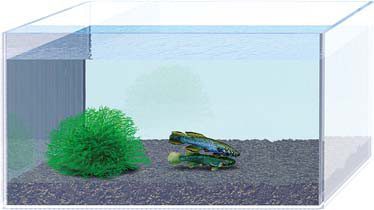 A similar method is typical for Killy fish living in muddy, periodically drying up reservoirs with a soft muddy bottom. Fish during the spawning period form temporary pairs and lay eggs in the substrate. If the reservoir dries up, the eggs remain viable, and a new generation appears during the rainy season.
A similar method is typical for Killy fish living in muddy, periodically drying up reservoirs with a soft muddy bottom. Fish during the spawning period form temporary pairs and lay eggs in the substrate. If the reservoir dries up, the eggs remain viable, and a new generation appears during the rainy season.
The design focuses on the substrate, it should be based on peat or coconut fibers. The eggs are placed in the soil, which is removed from the water and stored in a dark, warm place for a couple of months. Immersion in the ground provokes further development and the appearance of juveniles.
Bubble Nest Model
A similar method is inherent in labyrinth fish. During the spawning period, they form pairs, which often persist throughout their lives. The male builds a nest on the surface of the water, using pieces of plants, various debris, fastening it all with foam from small bubbles. The female lays eggs in the nest and remains to protect future offspring. As a rule, with the advent of fry, the parental instinct disappears.
The design should include tall plants that reach the surface, as well as floating plants with small leaves / branches, they will become building material. A spawning aquarium must be equipped with a tight lid; it ensures the formation of a warm, moist layer of air above the surface, which protects the labyrinth organ of the fish from hypothermia during breathing.
Breeding viviparous fish
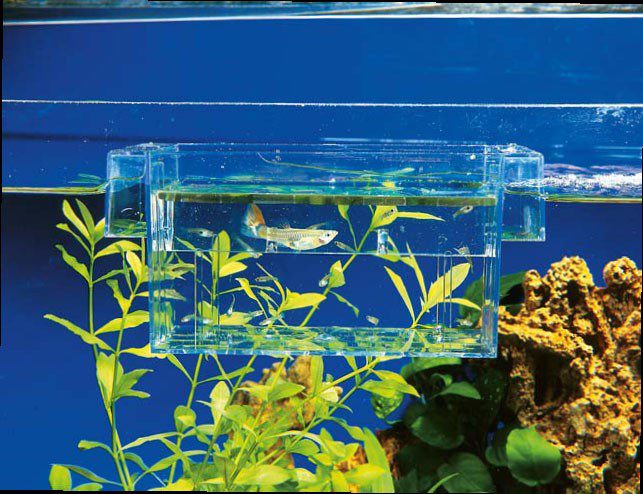 Viviparous species come from relatively stable habitats, so there is no need to change the conditions of detention and diet, spawning can occur at any time. However, the water temperature affects the pregnancy period. For example, at 25°C, Guppy’s pregnancy takes 28 days, but this period decreases to only 19 days if the temperature rises to 32°C.
Viviparous species come from relatively stable habitats, so there is no need to change the conditions of detention and diet, spawning can occur at any time. However, the water temperature affects the pregnancy period. For example, at 25°C, Guppy’s pregnancy takes 28 days, but this period decreases to only 19 days if the temperature rises to 32°C.
Most viviparous species are able to produce offspring in the general aquarium, however, the number of fry surviving to adulthood will tend to zero. They become a victim not only of other fish, but even of their own parents, in order to save the fry, you can use a separate spawning aquarium or a special trap.
The trap for breeding live-bearing fish is a plastic transparent chamber with a double bottom, which floats freely on the surface, where the pregnant female is placed. Small holes or gaps in the floor or walls of the chamber allow newborn fry to enter the middle chamber, where they are completely safe. When spawning is over, the female is returned to the aquarium, and the trap chamber with fry is transferred to a separate tank. When choosing a trap, choose the largest trap so that the females have enough room to swim.
Feeding fry
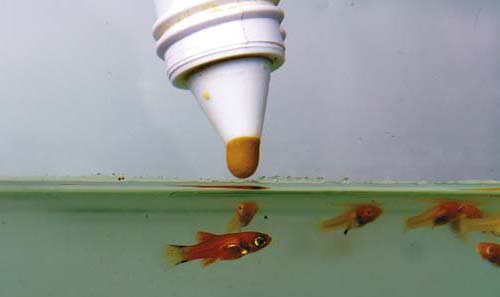 An integral part of a successful fish breeding cycle is having enough of the right food for the fry. At first, juveniles can only feed on liquid food from microscopic aquatic creatures, such as shoe ciliates. With the help of a syringe, droplets of water containing these organisms are supplied to the surface. As they grow older, you can start serving brine shrimp nauplii, then small daphnia and ground flakes of dry food. Depending on the species, the fry differ significantly in size, so in some cases you can immediately start with daphnia, brine shrimp and ground flakes.
An integral part of a successful fish breeding cycle is having enough of the right food for the fry. At first, juveniles can only feed on liquid food from microscopic aquatic creatures, such as shoe ciliates. With the help of a syringe, droplets of water containing these organisms are supplied to the surface. As they grow older, you can start serving brine shrimp nauplii, then small daphnia and ground flakes of dry food. Depending on the species, the fry differ significantly in size, so in some cases you can immediately start with daphnia, brine shrimp and ground flakes.
Not every aquarist can provide daily feeding of fry with microscopic live food. When keeping unpretentious species, the use of flakes ground to a state of flour is quite acceptable. This “flour” is mixed with water and also carefully fed drop by drop to the fry with a syringe.
Juveniles should be fed two, three, or even four times a day. They are not particularly mobile at this stage of life so it is very important that the food is distributed evenly throughout the tank and is within reach; otherwise, development problems will begin. Soft filtration promotes mixing of water, delivering food to all parts of the tank.
Possible problems and dangers
overcrowding – Successful breeding can leave you with a large number of fry that require constant care. Daily partial water changes are vital to prevent dangerous buildup of waste and food debris. Over time, as the fry develop, it will be necessary to increase their living space, they can be transferred to a larger tank or to a slightly smaller one. Insufficient space will inevitably cause overcrowding, fish will stop growing, and the risk of disease caused by stress and/or declining water quality will increase.
Manifestation of aggression – males of territorial species, such as cichlids and Siamese fish, at a certain age will begin to show mutual aggression and fight, sometimes with a fatal outcome. The main thing here is to separate them into different reservoirs in time. Usually this moment comes by three months, when males can already be quite easily distinguished by their bright color.
Population degeneration – viviparous species and Killy fish become sexually mature very early, after about three to four months they are already capable of producing offspring. If they continue to be kept together, this will lead to inbreeding and, as a result, the degeneration of the population. It is desirable to relocate juveniles to separate tanks, separately for males and females. It is easy to distinguish them, the males are more brightly colored. A similar problem is associated with closely related species. For example, you should not keep related species together such as swordtails, platies, they can interbreed with each other, giving hybrid offspring, which usually have a less attractive appearance and problems with further reproduction.
Absence of offspring – adult healthy fish do not produce caviar, or it turns out to be infertile. A similar situation is often associated with males, they are either too old, or in the case of viviparous species, the gonopodium is damaged. The problem is solved by replacing the male.
White coating on eggs – unsuitable water conditions (low temperature, too hard or soft water, etc.) lead to the formation of fungal plaque on the eggs. In this case, measures should be taken immediately to normalize the composition of the water and treat it with a weak solution of methylene blue.
High fry mortality – the problem may be related to feeding. Examine the belly of fry under a magnifying glass, at this age their bodies are almost transparent and food particles are easily distinguished in their abdomen. If they didn’t see anything, it’s possible that the pieces of food are too big for them. The death of fry can also be caused by poor water quality due to contamination with waste products and decomposition of food residues.



